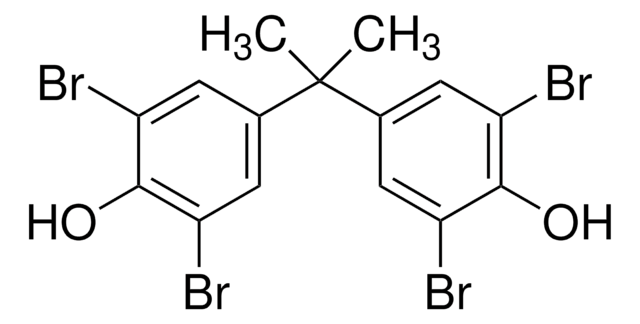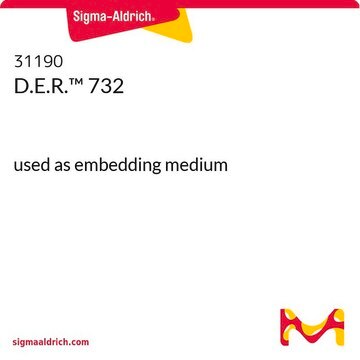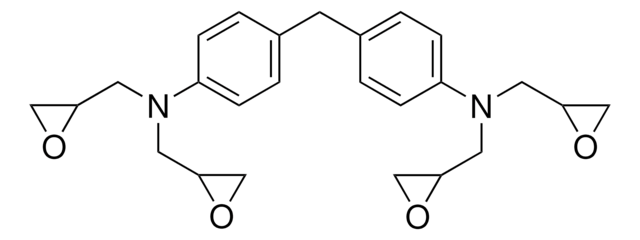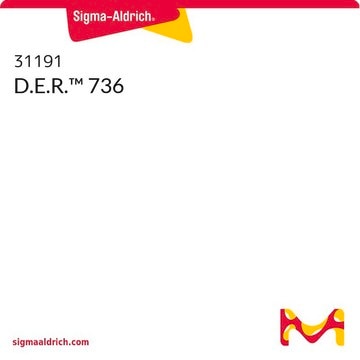430234
Bisphenol A diglycidyl ether, brominated
mol wt 350-450 g/epoxide by perchloric acid method
Synonym(s):
4,4′-(1-Methylethylidene)bis[2,6-dibromophenol] polymer with (chloromethyl)oxirane, 4,4′-(1-methylethylidene)bis(2,6-dibromophenol), Tetrabromobisphenol A-epichlorohydrin polymer
About This Item
Recommended Products
form
solid
Quality Level
mol wt
350-450 g/epoxide by perchloric acid method
extent of labeling
48 wt. % Br
viscosity
1,800 cSt(lit.)
mp
55-65 °C (lit.)
transition temp
softening point 55-65 °C (Durrans)
solubility
a variety of ketone, aromatic hydrocarbon and ether alcohol solvents: soluble
InChI
1S/C15H12Br4O2.C3H5ClO/c1-15(2,7-3-9(16)13(20)10(17)4-7)8-5-11(18)14(21)12(19)6-8;4-1-3-2-5-3/h3-6,20-21H,1-2H3;3H,1-2H2
InChI key
DEGGCMXJUHYWMD-UHFFFAOYSA-N
Related Categories
General description
Application
Physical properties
signalword
Warning
hcodes
Hazard Classifications
Eye Irrit. 2 - Skin Sens. 1
wgk_germany
WGK 3
flash_point_f
closed cup
flash_point_c
closed cup
ppe
dust mask type N95 (US), Eyeshields, Faceshields, Gloves
Certificates of Analysis (COA)
Search for Certificates of Analysis (COA) by entering the products Lot/Batch Number. Lot and Batch Numbers can be found on a product’s label following the words ‘Lot’ or ‘Batch’.
Already Own This Product?
Find documentation for the products that you have recently purchased in the Document Library.
Customers Also Viewed
Our team of scientists has experience in all areas of research including Life Science, Material Science, Chemical Synthesis, Chromatography, Analytical and many others.
Contact Technical Service


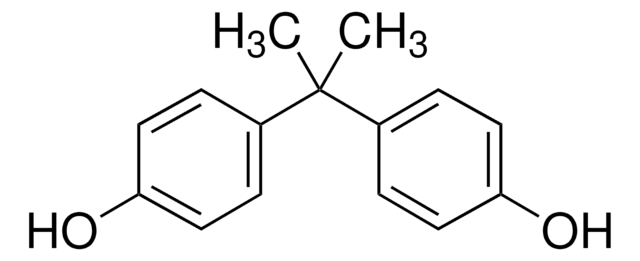
![Poly[(phenyl glycidyl ether)-co-formaldehyde] average Mn ~345](/deepweb/assets/sigmaaldrich/product/structures/122/336/0cd8255f-9639-47f1-ae7b-09908419ab3f/640/0cd8255f-9639-47f1-ae7b-09908419ab3f.png)

